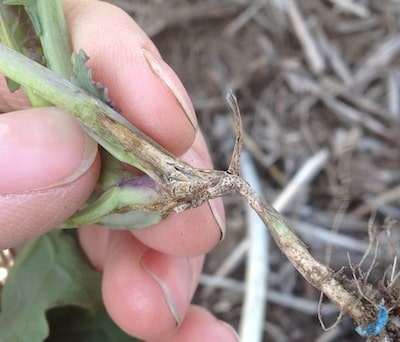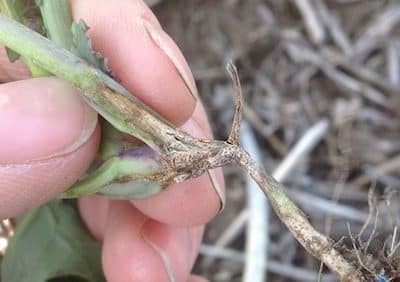
Moist conditions, good stands and tight canola rotations are contributing to blackleg and wirestem (rhizoctonia) in some canola fields. You can’t do much about wirestem at this stage, other than take extra care to protect a thinned stand from insects and disease throughout the year.
With blackleg, you do have control options.
Early blackleg infection — from the cotyledon to 3-4 leaf stages — leads to the greatest yield loss. If growers see blackleg lesions on cotyledons or leaves early in the season, this may indicate a greater risk of potential blackleg problems.
These tiny lesions may be tricky to spot, and you probably won’t see many of them. When scouting, also look for blackleg pseudothecia (black spots) on old canola residue, which may still be present on fields with a tight rotation.
Even if you can’t spot lesions on new plants or old stubble, the field could be at risk of serious blackleg infection.
Here are factors that increase the blackleg risk:
—Tight canola rotation
—Using the same variety many times in the rotation
—Yield loss to blackleg in previous years
—Using untreated non-certified seed
—Poor brassica weed control in previous years. These weeds can host blackleg in non-canola years
—Moist soils and warm humid conditions
If the above factors and your crop scouting suggest high risk for blackleg, consider fungicide as an additional tool to limit infection and yield loss. Headline, Propiconazole (Bumper, Pivot, Propel, Tilt) and Quadris are registered for blackleg management in canola. For more information on these products, click your province for a link to your guide: Alberta Saskatchewan Manitoba. If unsure about the decision, leave a few check strips and compare yields of treated to untreated areas.
Click here for more blackleg management tips.

